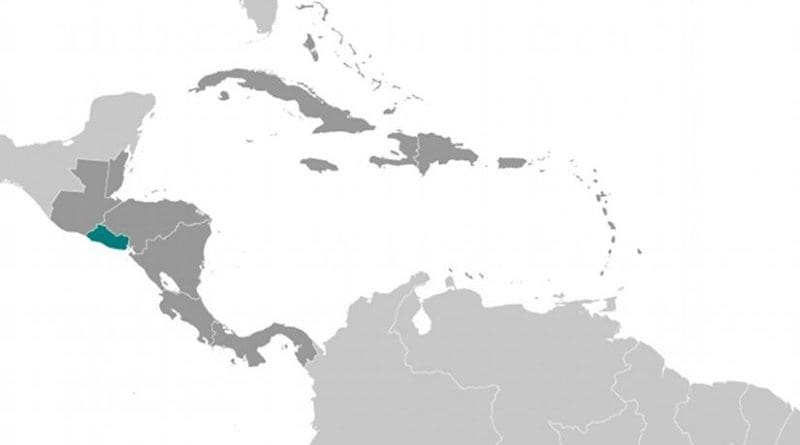Central America: Pandillas Try To Become Part Of Solution
For years, the so-called maras had been the focal point of Central America´s violence. But now these gangs are trying to become part of the solution, at least in El Salvador, offered a truce that has helped reduce the number of homicides. But this controversial tactic has sparked a heated debate.
The Salvadoran branches of two of the largest gangs in the region, the MS-13 and the Barrio 18, bitter enemies, have stopped using murder in order to gain territorial control or business.
An estimated 60,000 gang members are among their ranks, while another 10,000 are imprisoned.
From the start of the truce in March, to the surprise of many, the murder rate in this country of 6.1 million people dropped significantly from 14 a day to five, which translates to 70 murders per 100,000 inhabitants to 26, according to government estimates.
This reduction in the murder rate was not achieved by government action, such as the so-called “mano dura” or “iron fist” tactics first employed in 2003 and known for their repressive measures.
“The result of those repressive plans is overcrowding in the prisons and the mutation of the gang issue to other forms of violence,” said Mirna López, a sociologist at the Autonomous University of Honduras.
Chronic violence
The wave of violence that hit Central America — mainly El Salvador, Guatemala and Honduras — has been a major obstacle for these governments, which have seen public safety slip from their hands. The region is among the most violent in the world, various international studies have shown.
In Honduras, for example, the rate is 80 murders per 100,000 inhabitants. The average, in comparison, for Latin America is 22 per 100,000 inhabitants, according to the United Nations Development Program.
The gang phenomenon started in the United States and was brought back to Central America by deported immigrants. It quickly expanded in the region, fueled by extreme poverty and marginalization.
In Guatemala, where there are an estimated 20,000 gang members, the problem has grown even more complicated by the presence of Los Zetas. That Mexican drug cartel would be training members of the MS-13, whose name is an abbreviation of the Mara Salvatrucha, to use them as soldiers in their ranks. The Salvadoran authorities have also linked the Mexican cartel with local gangs.
“In Guatemala, more than a pact between maras, there has to be a pact between [criminal] groups that want to find a peaceful solution to the conflicts,” said Marco Antonio Castillo, director of the nongovernmental youth organization Grupo Ceiba. “Many of the groups that practice extortion, for example, are not even gangs. To have a broader negotiation is more complicated.”
It was the gang members themselves who proposed the pact. In El Salvador, it was negotiated by Mons. Fabián Colindres, a bishop in the military, and former lawmaker and ex-commander of the ruling Farabundo Martí National Liberation Front government Raúl Mijango.
“This agreement is solid,” Mijango said. “These people have given their word and for them, their word is something serious. There is a real willingness to resolve the problem.”
On May 2, gang members of Barrio 18, prisoner in Quezaltepeque, 26 kilometers north of San Salvador, said they would no longer recruit minors.
Extortion continues
But the Salvadoran government did not participate in the talks.
“We are not going to negotiate with criminals and we are not going to negotiate with gangs,” said Justice and Public Security Minister David Munguía, a retired general. “We haven´t resigned to the repression of crime.”
For some analysts, the Salvadoran government is trying to use the drop in the murder rate to their political advantage, particularly the Public Security Ministry, which in last November promised to reduce crime by nearly one-third.
“There is an issue of political survival, overall for Minister Munguía, who has given his word that murders would fall,” said Salvadoran political analyst Roberto Cañas.
But the truce has opened up new questions.
“The drop [in murders] is significant, and that’s important, but it seems to me that the reduction should not rest on the decisions of the gangs, but instead, on a public security policy of the state,” said López.
In the case of Honduras, the issue is more complicated because even though the gangs play a role, a lot of the violence stems from the expanding drug-trafficking networks.
“I am not sure that the leaders in the jails control all of the gangs in the country,” said Cañas about the truce.
In Guatemala, Castillo said there are conflicts within the gangs’ leadership, which would make a similar truce unlikely.
“We have to be less pessimistic,” said Mijango. “Doubts hurt the process.”
The “peace” process between the Salvadoran gangs has drawn international attention
On May 9, Mons Colindres was received in Washington by Miguel Insulza, secretary-general of the Organization of American States, who was interested in learning about his efforts of lowering violence in the region.

